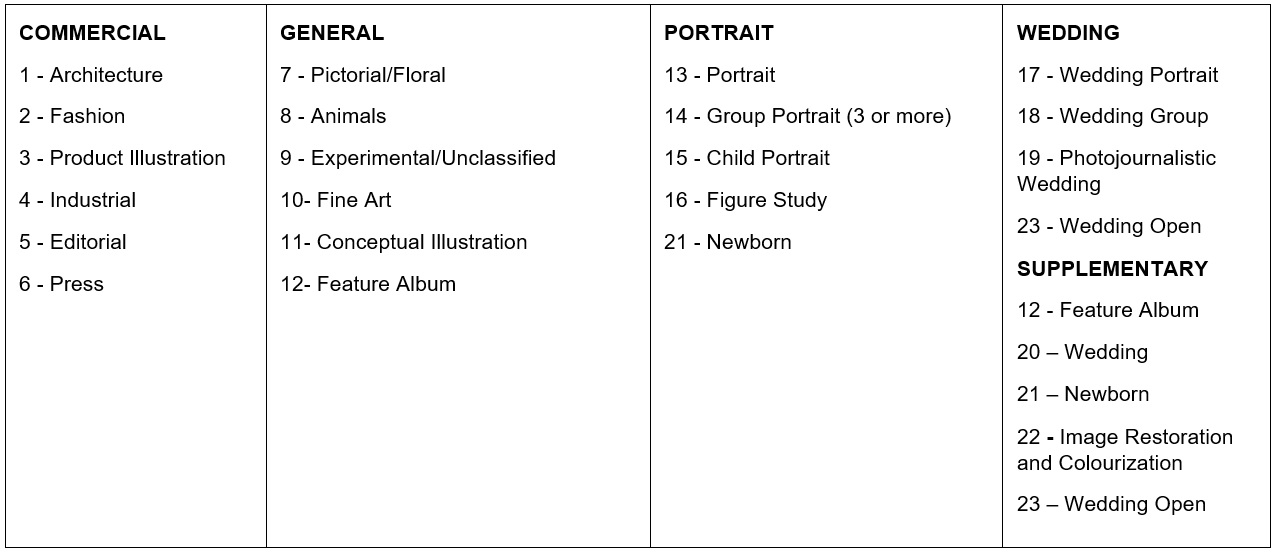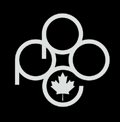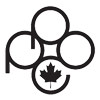The PPOC National Student Image Competition showcases
the best creative talent among Canada’s student photographers
Entrants must be enrolled in a full-time Photography Program at a recognized Community College or Technical Institute in Canada. The original exposures of all entries must have been made by the student while he or she was enrolled at the College or Institute.
The PPOC National Student Competition is judged in conjunction with the PPOC National Image Competition in February annually.
Submission Portals Open December 30, 2024
GENERAL
COMMERCIAL
PORTRAIT
Received, paid & completed forms online Deadlines:
January 31, 2025 5:00 pm EST
JUDGING DATES
February 21st to 23rd, 2025
AWARDS GALA
April 26th, 2025
PLEASE READ CAREFULLY AS ENTRIES THAT DO NOT CONFORM TO THESE RULES WILL NOT BE JUDGED
ELIGIBLE
1. Entrants must be enrolled in a full-time Photography Program at a recognized Community College or Technical Institute in Canada.
2. The original exposures of all entries must have been made by the student while he or she was enrolled at the College or Institute.
NOT ELIGIBLE
1. Images previously accepted in any prior national image competition of PPOC.
2. Images created under the supervision or direction of an instructor
3. Images that are entered in other classes in this competition.
4. Images entered from the same sitting, session or assignment must be dramatically different from those entered in other classes in this competition. The subject of an image can not be used in multiple images in the same Salon.
5. Images where the original photographic expression of the idea is not the expression or idea from the maker.
ENTRY LIMIT
A maximum total of 2 digital files per entrant.
DEADLINES & ENTRY FEES
One or two image entry, $45.00 (incl HST) ).............. RECEIVED BY January 31, 2025, 5:00 pm EST
All fees are for up to two digital files. All entry fees are non-refundable and are paid online with image uploading. Your completed entry form, signed certification and agreement and Visa or MasterCard number must be uploaded with your entry.
Audio Critique: Image audio critiques are available at an additional charge of $49.00 (incl HST)
ALL ENTRIES MUST BE RECEIVED BY, PAID
for and agreements completed and uploaded no later than Janurary 31, 2025, 5:00 pm EST
SUBMISSIONS
The files must be uploaded to the PPOC website at www.ppoc.ca. The Terms & Conditions Agreement form must be completed on-line and payment submitted as well at this link.
Specs & Sizes:
ALL files should be in JPEG format saved with high-quality compression (jpg 8) and in RGB colour mode, submitted on-line. Use an Adobe RGB (1998) or ProPhoto RGB colour space profile. The filename for each image must be the same as the Title of the image plus the file extension. i.e. “Illusions.jpg” when the title is “Illusions”.
The outside file dimensions must have an aspect ratio of 16:9. The maximum size allowed is 5120 x 2880 (horizontal) or 2880 x 5120 (vertical). This is the recommended size. Any other aspect ratios, either larger or smaller will be shown centered and judged with the empty pixels filled with a black or grey colour. The maximum resolution accepted is 5120 X 2880 horizontal and 2880x 5120 vertical. A lower resolution can result in files that are presented at a lower quality.
For best viewing by the judges, all images will be viewed at 100%. That means that they should be sized to fit a 5120 x 2880 pixel “canvas”. You could consider part of the canvas area as your “matte” which can have its own colour and treatment similar to a matte board with a smaller print mounted on it.
It is strongly suggested that you enter image competition with images that are placed on the maximum 5120 X 2880 canvas. Similar to using the correct aspect ratio, this will ensure your image will be presented to the judges at their best quality.
NOTE: For judging, the monitor will be rotated according to the orientation of the image, i.e. portrait mode for vertical images and landscape mode for horizontal images.
Identification:
Text is allowed on images but Text or any other item that could identify the maker is not permitted on the image and will disqualify the image. It is important that your images be listed in the correct category and class with their given titles. "Untitled" or "No Title" is not acceptable. All images MUST be titled.
NOTE: The class listings will be in pull-down menus when you go online at www.ppoc.ca to upload your entries.
Digital Judging Specifications:
Digital files will be viewed on an IMac 5k, calibrated with an X-Rite i1Display Pro device. The white point is set to 6500K, 120 cd/m2 luminance and the gamma to 2.2. All images are viewed at 100%.
Judging:
Competitors are warned that the Judges or Image Competition Committee will not attempt to redirect an image that is obviously in the wrong category or class and may be judged as unacceptable. READ THE CLASS DESCRIPTIONS CAREFULLY!
NOTE: The decision of the judges shall be final. The Image Competition Chairperson shall have the absolute and final authority to decide on any issue not specifically covered by these rules. All entries will be handled with professional care, but the Image Competition Committee and/or PPOC assumes no responsibility for loss or damage to entries while in its custody, or on exhibition, or in transit.
Awards:
Awards will be presented at the Virtual Awards Gala, April 7th, 2024. There are four student awards that will be presented. One award in each category and one award will be presented to the best overall image.
The Image Competition Committee and/or the judges reserve the right to withhold or withdraw any award.
Class Definitions:
The following "definitions" of various classes are for the guidance of photographer and judge alike. Competitors are warned that the Image Competition Committee will not undertake to reclassify images which are obviously misdirected. Note: In the event of the same (or virtually identical) image being submitted by two different entrants, i.e., photographer/digital imager/specialist, the image must be accompanied by a Statement of Purpose. The Statement of Purpose must be submitted in PDF form and submitted via e-mail to the Image Competition Chair and contain no more than 75 words explaining the entrant's role and involvement in creating the image. Indicate the purpose of the image(s), for whom it was made, and any other information that would be meaningful to the judges.
The rules to our competition are very simple: “Maker must have personally exposed the original images.” The only exception is Conceptual Illustration Class 11 where, with permission, other images may be used as part of your assembly.
When you submit an image to the competition you certify that you have “created, composed and made the original exposures”. Stock backgrounds, stock scenes, digital backgrounds, stock anything will end up in the disqualification of that image. If your stock photography embedded image slipped through the regional judging process undetected and scored Merit or Excellence you will not be allowed to enter that image or use that image as an Affiliate image for the National competition. If your stock photography embedded image slips through the National judging process undetected and it is later found to contain stock photography, your awards and resulting designations will be revoked.
Class 1 - Architecture
An architectural photograph must successfully define and/or portray the outstanding architectural features of a building interior or exterior by dramatic use of view, perspective, and lighting.
You may consider thinking outside the long-standing constraints of architectural photography and let your work present an exciting, stimulating, representation of your client’s or your own view of the building.
Class 2 - Fashion
Fashion and Beauty Photography is selling a lifestyle. Creative visual excitement is the goal of current fashion designers. Today's fashion and beauty/glamour photography should reflect this creativity, and also stimulate interest and purchasing appeal with the viewer.
Class 3 - Product Illustration
Images in this class must show a product or recognizable service. The images should be unique, showing interest and purchasing appeal on behalf of the client.
Class 4 - Industrial
A successful industrial photograph draws attention to an on-site industrial process or product, illustrating the maker's ability to produce dramatic images under what can be challenging industrial conditions.
Class 5 - Editorial
Images in this class depict lifestyle or business environments and their story-telling activities. These images typically accompany an article or caption description. In successfully invoking a viewer's interest, these feature-oriented photographs could include executive portraiture, annual reports, street photography, and business activities in general. They may present images of an emotional, humorous, or unusual nature. Press images will not be considered within this class.
Class 6 - Press
Photographs that illustrate a news, sports, human interest, or publicity event that have high impact, lasting emotional response, and often have required the photographer not only to be at the right place at the right time, but also, capturing the peak moment of action, reaction, or emotion drawing an emotional response from the viewer. No alteration, manipulation or staged images allowed in this class. Basic colour and brightness adjustments, cropping, dodging and burning-in are allowed. The original capture file (no matter what file type) must be available for review when requested by the Image Competition Committee.
Class 7 - Pictorial/Floral
Pictorial / Floral photographs illustrate natural and/or human-made features of the environment with captivating images of wild places with a unique perspective, from landscape vistas to plants and other flora in an aesthetically pleasing - or distressing -presentation of geographic settings or plant material. The emphasis is on interest, visual impact, composition, and technical excellence. They must rise above the typical scenery/floral images by application of the same principles common to all landscape artists.
Class 8 - Animals
A mixed class covering wild and domestic animals photographed in their natural habitat or in a location of the photographer's choosing, i.e., studio, barn, corral, etc., while using a unique perspective to invoke interest and showcase the animal.
No animal may be harmed, baited, deliberately captured, or otherwise compromised in the creation of the photograph. Any photographs of animals in captivity, rehabilitation or other non-studio “controlled” circumstances must include a brief description of the circumstance in which the photo was taken.
Class 9 - Experimental / Unclassified
Images derived from unconventional means or images which defy classification into any other classes. A photographer's creative thoughts and technical skills can be brought to play in the most exciting way through unusual use of lenses, light and processing - an image that defies the normal traditions. Not all special effect images must go into this class. For example, an industrial image with special effects, if recognizable as industrial, should be entered in Industrial, not in Experimental / Unclassified. Images submitted in this class may be created using Computer Generated Imaging software.
Class 10 - Fine Art
Fine art photography is imagery created in accordance with the vision of the photographer as an artist. Fine art photography stands in contrast to representational photography such as traditional commercial, photojournalism and most commissioned photography which is representing objective reality rather than the creative vision of the photographer. Work is judged for its aesthetic, often unique, nature. Included in this class are unusual photographs, individual images or a series of images on one entry, and can include classic black-and-white scenes, painterly effects, classic still life, bizarre images and other unconventional approaches. The main subject featured in the images in this class must be created using in-camera capture, supporting subjects may be computer generated imagery (including imagery created through the use of artificial intelligence).
Class 11 - Conceptual Illustration
Images in this class are conceptual in nature. They illustrate a story, theme, or subject by using the elements of the original image and adding a creative interpretation to build a concept. As carefully constructed photographic scenes, they can depict visual narratives, events, or abstract concepts. The photographer is responsible for all elements of the “post-image” production and the image will be judged based on the strength of the composition that is created from those photographs. The image should still be recognizable as a photograph following normal conventions of light, shading, and perspective.
Copyright is a major concern and must be cleared by the photographer. If using other makers’ images, written permission to do so must be available for review when requested by the Image Competition Committee. The main subject featured in the images in this class must be created using in-camera capture, supporting subjects may be computer generated imagery (including imagery created through the use of artificial intelligence).
Please submit an additional image file which includes all the elements used in your final image, on a plain background, that were not camera captured by you. This would include purchased images, computer generated images, and artificial intelligence created images.
Class 12 - Feature Album
A presentation showcasing a subject(s) or occasion combining a unique perspective placing emphasis on storytelling and overall presentation. Album to be judged for overall quality of design, flow, and emotional impact, as well as the strength of all the photographs.
No wedding-related images within this class. One album per member. An entrant may enter up to ONE image from their feature album entry into the regular image competition.
Class 13 - Portrait
A portrait presents an individual or couple in such a way as to reflect the personality of the subject, and illustrate the personality, artistry, originality, creativity, and technical skills of the maker.
Class 14 - Group Portrait
Group portraits must be comprised of three or more people in studio, or on location, in contemporary or traditional style. Images in this class should illustrate the personality, artistry, originality, creativity, and technical skills of the maker.
Class 15 - Child Portrait
Portrait of one or two children, 29 days through 12 years of age. In studio or on location, contemporary or traditional style. Images in this class should illustrate the personality, artistry, originality, creativity, and technical skills of the maker.
Class 16 - Figure Study
Skilful and creative artistic representations of the unclothed human figure. The human figure can be the whole figure or a partial figure. Examples include art nudes, anatomical studies, life studies, editorial statements. Images may depict nudes in an emotional context or as a graphic design; may include the environment and body paint. Subjects must be at least 18 years of age.
Class 17 - Wedding Portrait
Image of a wedding couple, or two people, one of whom is part of the wedding couple. This class also may include images from an engagement session, trash the dress, or day-after the wedding couple’s session. You may consider thinking outside the longstanding and traditional constraints of wedding photography and let your work present an exciting, stimulating representation of your client’s or your own view of the couple. No wedding groups in this class.
Class 18 - Wedding Group
Image of three or more people, one of whom is part of the wedding couple in the context connected to a wedding event. You may consider thinking outside the longstanding and traditional constraints of wedding photography and let your work present an exciting, stimulating representation of your client’s or your own view of the couple.
Class 19 - Photojournalistic Wedding
An image captured in the context of a wedding without posing, prompting, or intervention of any kind from the photographer. Images in this class are candid, and storytelling in nature and requires the photographer to have been in the right place at the right time to capture a moment of interest, emotion, and/or action. Traditional technical considerations like lighting, posing and composition are secondary to interest, expression, emotion and/or action.
Class 20 - Wedding Album
A presentation showing one wedding, guiding the judges through the day from beginning to end. Images must demonstrate visual impact, composition, and technical skill. Judging emphasis will be placed on storytelling and overall presentation/design. A minimum of 95% of photographs in a wedding album must be certified by the maker to be of their own creation. Any images (up to 5%) not photographed by the entrant must be identified clearly in an email sent to the Image Competition Chair prior to the judging. The judges will be made aware of which images are not taken by the entrant and will be judged accordingly. Only one wedding album per member can be entered. Entries from styled shoots for editorial purposes, images of hired talent/models and images created at workshops and/or education seminars are not eligible for entry. An entrant may enter up to ONE image from their wedding album entry into the regular image competition.
Class 21 - Newborn
Portrait of one or multiple newborn babies aged from birth to 28 days old. The newborn may be posed in a studio or environmental setting with or without props.
A prop is defined as anything that supports the newborn baby and/or enhances the story of the image. If another person is used as the prop, the primary subject must be the newborn. Safety is a major concern when photographing newborns. All precautions must be used to ensure the safety of the baby.
Class 22 - Image Restoration and Colourization
This is a major restoration and colourization of a damaged or aged photograph utilizing traditional and/or digital technology. The entrant must submit a digital file with before and after images the same size within a horizontal or vertical canvas with 16:9 sizing dimensions (suggested either 3840 x 2160 or pixels 16:9 ratio).
Class 23 - Wedding Open
Due to the varied aspects of a wedding event and the creative potential it offers, this class encourages creativity. It includes wedding-related images that do not qualify for other wedding classes. These can be images of subjects from any part of the wedding day, including depictions of wedding details, rings, location/venue, and fashion accessories. The focus of this class is not on the wedding couple. Although there MAY be images of the wedding couple in the periphery, the focus is on other participants and details of the events, locations etc. of the wedding day.
Categories and Classes








